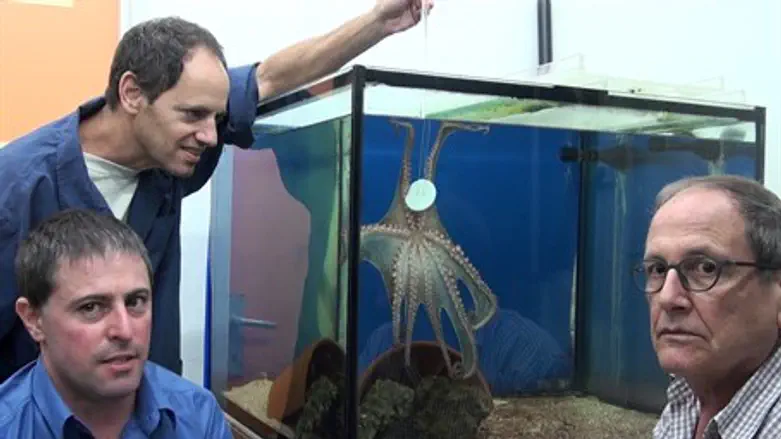
Researchers at the Hebrew University of Jerusalem have answered a stumper of a question: why is it that an octopus's suckers stick to practically anything, but not to its own body? And further, how do they avoid tying their eight legs in knots?
According to the research, a chemical produced by octopus skin temporarily prevents the suckers from functioning when they come in contact with the octopus. The process is made the more remarkable by the fact that octopuses' brains are unaware of where their arms are.
Behind the research are Dr. Guy Levy and Dr. Nir Nesher of the Department of Neurobiology in the university's Alexander Silberman Institute of Life Sciences, who worked alongside Prof. Binyamin (Benny) Hochner, Principal Investigator in the department's Octopus Research Group.
"We were surprised that nobody before us had noticed this very robust and easy-to-detect phenomenon,” said Levy. “We were entirely surprised by the brilliant and simple solution of the octopus to this potentially very complicated problem.”
Regarding the octopus' inability to sense where their arms are in the same way as other animals, Hochner explained "our motor control system is based on a rather fixed representation of the motor and sensory systems in the brain in a format of maps that have body part coordinates.”
“It is hard to envisage similar mechanisms to function in the octopus brain because its very long and flexible arms have an infinite number of degrees of freedom,” Hochner remarked. “Therefore, using such maps would have been tremendously difficult for the octopus, and maybe even impossible.”
Researchers observed that octopus arms remain active up to an hour after amputation, and that the arms never grab octopus skin, hinting at how the animals avoid tangling themselves in their many arms despite being unaware of their location.
"The skin of the octopus prevents octopus arms from attaching to each other or to themselves in a reflexive manner,” the researchers write. “The drastic reduction in the response to the skin crude extract suggests that a specific chemical signal in the skin mediates the inhibition of sucker grabbing.”
On the other hand, live octopuses can apparently override the chemical mechanism, for example by grabbing an amputated arm with their own attached arms.
Practical applications of the research
The research at first glance may appear somewhat distanced from our daily lives - but in fact, it may have a great impact on technology.
While the researchers have yet to identify the particular active agent that prevents the arms from sticking to each other, they note that the mechanism may be used in the future in a bio-inspired robot design.
“Soft robots have advantages (in) that they can reshape their body,” Nesher says. “This is especially advantageous in unfamiliar environments with many obstacles that can be bypassed only by flexible manipulators, such as the internal human body environment.”
The new findings have been shared by the researchers with the European Commission project STIFF-FLOP, which is working to develop a flexible surgical manipulator in the shape of an octopus arm.
"We hope and believe that this mechanism will find expression in such new classes of robots and their control systems,” Hochner added.
Bio-inspired technology had been used by the IDF to develop a snake robot, whose flexibility allows for great maneuverability in stealth reconnaissance missions.